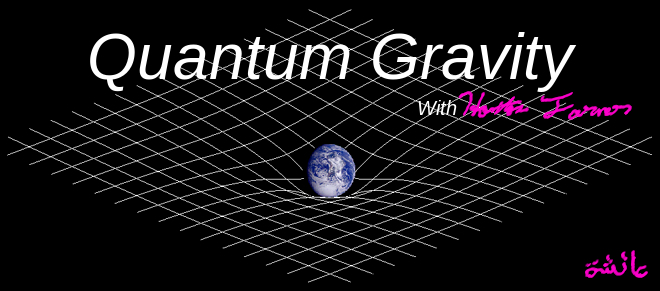General Relativity (GR) is 100 years old and today. Many writings will try to simplify it using illustrations with sheets and bowling balls and such. If you want to have a more precise idea of what it really is and you know a bit of algebra this article is for you. Here is what GR is in simple but still mathematical terms understandable to all who know high school algebra.
We will start with the Pythagorean theorem. Then add to it until we get to the formula that gives us the big bang theory. Then relate that to gravity.
Pythagorean Theorem.
In algebra there is a theorem which states that the square of the hypotenuse of a right triangle is equal to the sum of the squares of the other two sides.

This is the Pythagorean theorem. It is the basis for defining distance between two points. It appears in many forms in physics and advanced mathematics. What this formula defines is distance between points in space.
The Pythagorean theorem. It is the basis for defining distance between two points. It appears in many forms in physics and advanced mathematics. What this formula defines is distance between points in space. IF this formula is valid in a given space then the space can be said to be flat. In slightly more complex terms it defines the distance between points in a flat space.

This is the distance formula in Euclidean space. This is essentially the Pythagorean theorem with some different symbols.
Special Relativity
Special relativity is often explained with E=Mc^2. It can be developed from two physics based postulates(EINSTEIN, 1970) (translation). However, the more relevant view of it is in terms of space-time and the distance between point sin a 4-d space time. This is given by the Minkowski metric(Hall, 2009).

This defines the distance between points in a 4-D space time without significant gravity. The lack of gravity is why Special Relativity is called ”special”. It is limited in scope.
Notice it is just like the Pythagorean theorem in the following sense. Something squared equals the sum of two other things squared. In fact, in 2-D space it simplifies to the Pythagorean theorem. Special relativity at the most basic and fundamental level is all about the distance between points in a 4 D space. However, that space does not allow for the effect of strong gravitational fields. It was a limited theory and that lead to the need for general relativity.
General Relativity in simple terms.
General relativity can be expressed as an equation that says the following.
![]()
One solution to this equation which is most illustrative of the connection to space time gives us the big bang theory.

There are two notable differences between the FLRW metric and the Minkowski metric. Notice that the function a(t) causes pace to expand as time goes forward or contract as time goes backward. Other than that, it is again something squared is equal to the sum of two other squares.
They key difference with the big bang metric is that it has the scale factor. The scale factor multiplies the distance between points in space time. This means the distance between points in space time, will grow with time. Unless some other metric is dominant, like between objects bound by gravity. So as time passes things like your body, or the solar system or the galaxy cluster we are part of don’t get larger. What does get larger is the universe as a whole. Space between galaxies and galaxy clusters will grow with time.
How does geometry cause gravity?
To see that we need one more metric. This one is due to Karl Schwarzschild. It is a solution to Einstein’s field equations which gives us black holes. It also gives us the gravitational field of any spherical object. Other similar solutions offer small corrections to this metric for most situations.

The key difference with this metric lies in the the function proportional to 1/r. This causes the existence of paths through space time that circle back and close on themselves. Such paths are known as geodetics, and when they close on themselves they are called orbits.
The existence of these closed paths are what we know as gravity. You fall towards the ground and move forward in time because that is the shortest most direct path from one point in curved space time to the other.
If that sounds confusing… great. Modern physics theories like General Relativity (and quantum theory) are not really meant to be intuitive instead they are only understood by way of their mathematics and observable, measurable effects on the universe.
Conclusion
Everyone who has graduated high school in the last 40 years has seen this. There are two reasons for this. Things like algebra aren’t used in daily adult life, so they are often forgotten. In daily adult life the only math people do relates to money, and a few repetitive tasks that occur in their job. Hopefully with this brief refresher on the algebra, any who read this will be able to look at a demonstration where a large mass is placed on a rubberized sheet and understand what it is really showing. What changes is the formula for the distance between two points. That change creates what we experience as the force of gravity.
Too Long; Didn’t Read
In simple terms. The force that makes things go down happens because the shortest line between points changes when heavy things are around.
The distance between space time points changes when masses are present. Fundamentally it all all just fancy versions of the pythagorean theorem.
References
EINSTEIN, A. (1970). On the Electrodynamics of Moving Bodies. In Special Theory of Relativity (pp. 187–218). Elsevier. https://doi.org/10.1016/b978-0-08-006995-1.50014-4
Hall, G. (2009). Hermann Minkowski and Special Relativity. In Minkowski Spacetime: A Hundred Years Later (pp. 65–82). Springer Netherlands. https://doi.org/10.1007/978-90-481-3475-5_3



Comments